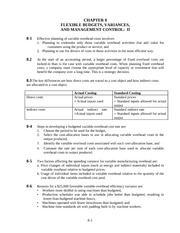A lower asset turnover ratio indicates that a company is not especially effective at using its assets to generate revenue. Clearly, it would not make sense to compare the asset turnover ratios for Walmart and AT&T, since https://accounting-services.net/form-990-frequently-asked-questions/ they operate in very different industries. But comparing the relative asset turnover ratios for AT&T compared with Verizon may provide a better estimate of which company is using assets more efficiently in that industry.

Asset turnover ratios vary across different industry sectors, so only the ratios of companies that are in the same sector should be compared. For example, retail or service sector companies have relatively small asset bases combined with high sales volume. Meanwhile, firms in sectors like utilities or manufacturing tend to have large asset bases, which translates to lower asset turnover.
Asset Turnover vs. Fixed Asset Turnover Ratio
The asset turnover ratio can also be analyzed by tracking the ratio for a single company over time. As the company grows, the asset turnover ratio measures how efficiently the company is expanding over time – especially compared to the rest of the market. Although a company’s total revenue may be increasing, the asset turnover ratio can identify whether that company is becoming more or less efficient at using its assets effectively to generate profits. Look for a higher current asset turnover ratio because it shows that a company is strong in its fundamentals. Look at the current asset turnover ratio because they are interested in the performance of the company in terms of net sales.
Minimizing returns can be a great way to improve your net sales – start by tackling returns fraud and offering store credit as an alternative to refunds. You could also introduce new products or service lines that don’t require any additional investment in assets, thereby opening new revenue streams to your business. In the retail sector, an asset turnover ratio of 2.5 or more could be considered good, while a company in the utilities sector is more likely to aim for an asset turnover ratio that’s between 0.25 and 0.5. An asset turnover ratio equal to one means the net sales of a company for a specific period are equal to the average assets for that period. Suppose company ABC had total revenue of $10 billion at the end of its fiscal year. Its total assets were $3 billion at the beginning of the fiscal year and $5 billion at the end.
Use of Asset Turnover Ratio Formula in Dupont Analysis
The fixed asset turnover ratio (FAT) is, in general, used by analysts to measure operating performance. The asset turnover ratio measures the efficiency of a company’s assets in generating revenue or sales. It compares the dollar amount of sales (revenues) to its total assets as an annualized percentage. Thus, to calculate the asset turnover ratio, divide net sales or revenue by the average total assets. One variation on this metric considers only a company’s fixed assets (the FAT ratio) instead of total assets.
- Thus, to calculate the asset turnover ratio, divide net sales or revenue by the average total assets.
- In our hypothetical scenario, the company has net sales of $250m, which is anticipated to increase by $50m each year.
- It is important to note that the asset turnover ratio will be higher in some sectors than in others.
- Moreover, as mentioned above, the industry chosen for two comparable companies should be the same.
- Whereas, the Asset Turnover Ratio is calculated by dividing Net Sales by Average Total Assets for a given period of time.
In our hypothetical scenario, the company has net sales of $250m, which is anticipated to increase by $50m each year. Additionally, you can track how your investments into ordering new assets have performed year-over-year to see if the decisions paid off or require adjustments going forward. My Accounting Course is a world-class educational resource developed by experts to simplify accounting, finance, & investment analysis topics, so students and professionals can learn and propel their careers. Watch this short video to quickly understand the definition, formula, and application of this financial metric. Yarilet Perez is an experienced multimedia journalist and fact-checker with a Master of Science in Journalism. She has worked in multiple cities covering breaking news, politics, education, and more.
How Is Asset Turnover Calculated?
Average total assets are found by taking the average of the beginning and ending assets of the period being analyzed. The standard asset turnover ratio considers all asset classes including current assets, long-term assets, and other assets. The higher the current asset turnover ratio, obviously the better it is because a higher score in asset turnover means more sales obtained for an investment of a fixed amount (usually Rs. 100).
The total asset turnover ratio calculates net sales as a percentage of assets to show how many sales are generated from each dollar of company assets. For instance, a ratio of .5 means that each dollar of assets generates 50 cents of sales. The higher your company’s asset turnover ratio, the more efficient it is at generating revenue from assets. In short, it indicates that the company is productive and generates little waste, while it also demonstrates that your assets are still valuable and don’t need to be replaced.
How to Calculate Net Asset Turnover?
Over the same period, the company generated sales of $325,300 with sales returns of $15,000. While the asset turnover ratio should be used to compare stocks that are similar, the metric does not provide How Do You Calculate Asset Turnover Ratio? all of the detail that would be helpful for stock analysis. It is possible that a company’s asset turnover ratio in any single year differs substantially from previous or subsequent years.
- Watch this short video to quickly understand the definition, formula, and application of this financial metric.
- Over the same period, the company generated sales of $325,300 with sales returns of $15,000.
- Hence, it is often used as a proxy for how efficiently a company has invested in long-term assets.
- The asset turnover ratio is calculated by dividing the net sales by the average total assets.
To determine the value of a company’s assets, the average value of the assets for the year needs to first be calculated. The asset turnover ratio is used to evaluate how efficiently a company is using its assets to drive sales. It can be used to compare how a company is performing compared to its competitors, the rest of the industry, or its past performance. Measuring the current assets turnover ratio in comparison to these ratios can show the performance of the company in a better manner. When we divide net sales by current assets and multiply it by 100, the value of sales that occurred due to an investment of Rs. 100 is obtained. Therefore, the current assets turnover ratio, when expressed in percentage terms, indicates the net sales that have occurred due to the investment of each Rs. 100 in the process.
How to improve the asset turnover ratio
The ratio can be calculated by dividing gross revenue by the average of total assets. In other words, while the asset turnover ratio looks at all the company’s assets, the fixed asset ratio only looks at the fixed assets. A fixed asset is a resource that has been purchased by the company with the intent of long-term use, such as land, buildings and equipment. The asset turnover ratio is a way to measure the value of a company’s sales compared to the value of the company’s assets.
Advisory services provided by Carbon Collective Investment LLC (“Carbon Collective»), an SEC-registered investment adviser. For Year 1, we’ll divide Year 1 sales ($300m) by the average between the Year 0 and Year 1 PP&E balances ($85m and $90m), which comes out to a ratio of 3.4x. For the final step in listing out our assumptions, the company has a PP&E balance of $85m in Year 0, which is expected to increase by $5m each period and reach $110m by the end of the forecast period. One critical consideration when evaluating the ratio is how capital-intensive the industry that the company operates in is (i.e., asset-heavy or asset-lite). As with all financial ratios, a closer look is necessary to understand the company-specific factors that can impact the ratio. And such ratios should be viewed as indicators of internal or competitive advantages (e.g., management asset management) rather than being interpreted at face value without further inquiry.
Formula and Calculation of the Asset Turnover Ratio
Asset turnover ratio is a type of efficiency ratio that measures the value of your business’s sales revenue relative to the value of your company’s assets. It’s an excellent indicator of the efficiency with which a company can use assets to generate revenue. Typically, total asset turnover ratio is calculated on an annual basis, although if needed it can be calculated over a shorter or longer timeframe. Sometimes, investors and analysts are more interested in measuring how quickly a company turns its fixed assets or current assets into sales. In these cases, the analyst can use specific ratios, such as the fixed-asset turnover ratio or the working capital ratio to calculate the efficiency of these asset classes. The working capital ratio measures how well a company uses its financing from working capital to generate sales or revenue.
What is the formula for asset ratio?
The return on total assets ratio is calculated by dividing a company's earnings after tax by its total assets.
